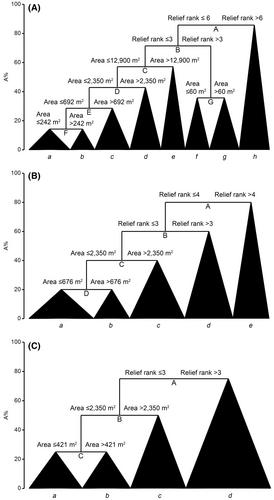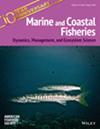Integrating assemblage structure and habitat mapping data into the design of a multispecies reef fish survey
Abstract
Objective
Since 2010, three spatially disjunct reef fish video surveys have provided fishery-independent data critical to the assessment and management of reef fishes in the Gulf of Mexico. Although analytical approaches have recently been developed to integrate data from these surveys into a single measure of relative abundance and size composition, a more parsimonious approach would be to integrate survey efforts under a single Gulf-wide survey design. Accordingly, we conducted a retrospective analysis of historical video- and habitat-mapping data to develop a novel stratified random sampling design for conducting surveys of natural and artificial reef habitats.
Methods
We conducted a series of classification and regression tree analyses to delineate both spatial and habitat strata, and conducted simulations to assess the performance of an optimized survey design.
Result
Spatially, classification and regression tree results identified three depth strata (10–25 m, >25–50 m, >50–180 m) and three regional strata (north-central Gulf, Big Bend, southwest Florida) in the eastern Gulf. For both natural and artificial reefs, habitat strata were delineated based on a combination of relative relief (low, medium, high) and size of the individual reef feature, although reef scale differed markedly between natural (<100 m2, 100–1000 m2, >1000 m2) and artificial habitats (<25 m2, 25–100 m2, >100 m2). To optimize effort among sampling strata, effort was allocated proportionally based on a combination of habitat availability and managed-species richness for each stratum. Simulation results indicated that relative median biases were <10% and relative median absolute deviations <30% on estimates of abundance for most species examined on natural reefs under the optimal design, except Greater Amberjack Seriola dumerili. These measures of bias and imprecision were similar or higher for most species simulated using simple random and stratified random survey designs. Estimated relative median bias and relative median absolute deviations were notably higher for artificial reef surveys.
Conclusion
Based on these results, survey efforts were integrated as the Gulf Fishery Independent Survey of Habitat and Ecosystem Resources (G-FISHER) in 2020.


 求助内容:
求助内容: 应助结果提醒方式:
应助结果提醒方式:


